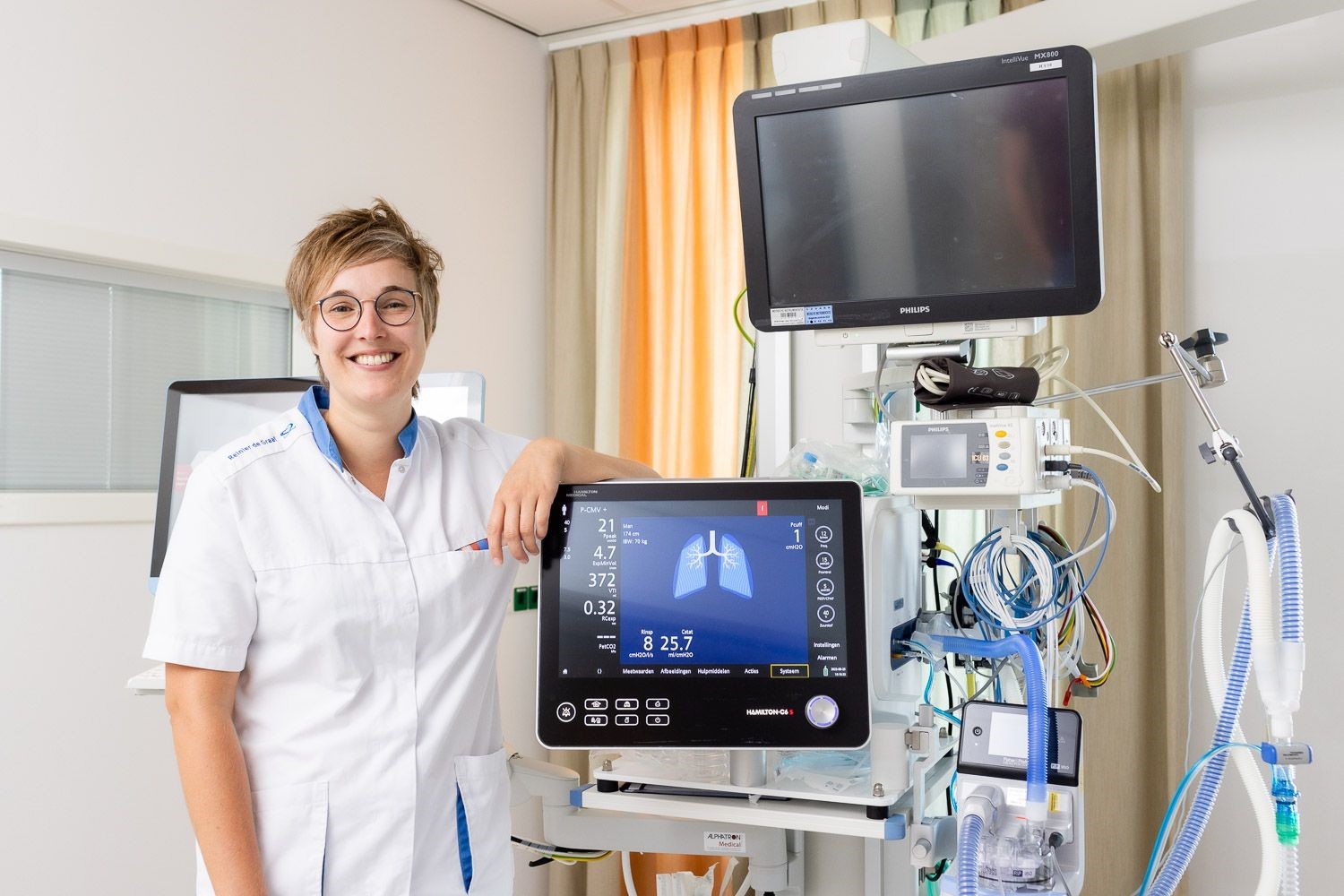 februari 2021
februari 2021Comparison of Mechanical Power During Adaptive Support Ventilation Versus Nonautomated Pressure-Controlled Ventilation-A Pilot Study
Ventilation Practitioner Laura Buiteman-Kruizinga schreef dit artikel.
Abstract
Objectives:
The aim of this pilot study was to compare the amount of “mechanical power of ventilation” under adaptive support ventilation with nonautomated pressure-controlled ventilation.
Design:
Single-center, observational prospective pilot study adjoining unitwide implementation of adaptive support ventilation in our department.
Setting:
The ICU of a nonacademic teaching hospital in the Netherlands.
Patients:
Twenty-four passive invasively ventilated critically ill patients expected to need of invasive ventilation beyond the following calendar day.
Measurements and Main Results:
In patients under adaptive support ventilation, only positive end-expiratory pressure and Fio2 were set by the caregivers—all other ventilator settings were under control of the ventilator; in patients under pressure-controlled ventilation, maximum airway pressure (Pmax), positive end-expiratory pressure, Fio2, and respiratory rate were set by the caregivers. Mechanical power of ventilation was calculated three times per day. Compared with pressure-controlled ventilation, mechanical power of ventilation with adaptive support ventilation was lower (15.1 [10.5–25.7] vs 22.9 [18.7–28.8] J/min; p = 0.04). Tidal volume was not different, but Pmax (p = 0.012) and respiratory rate (p = 0.012) were lower with adaptive support ventilation.
Conclusions:
This study suggests adaptive support ventilation may have benefits compared with pressure-controlled ventilation with respect to the mechanical power of ventilation transferred from the ventilator to the respiratory system in passive invasively ventilated critically ill patients. The difference in mechanical power of ventilation is not a result of a difference in tidal volume, but the reduction in applied pressures and respiratory rate. The findings of this observational pilot study need to be confirmed in a larger, preferably randomized clinical trial.
Het hele artikel is hier te vinden.
